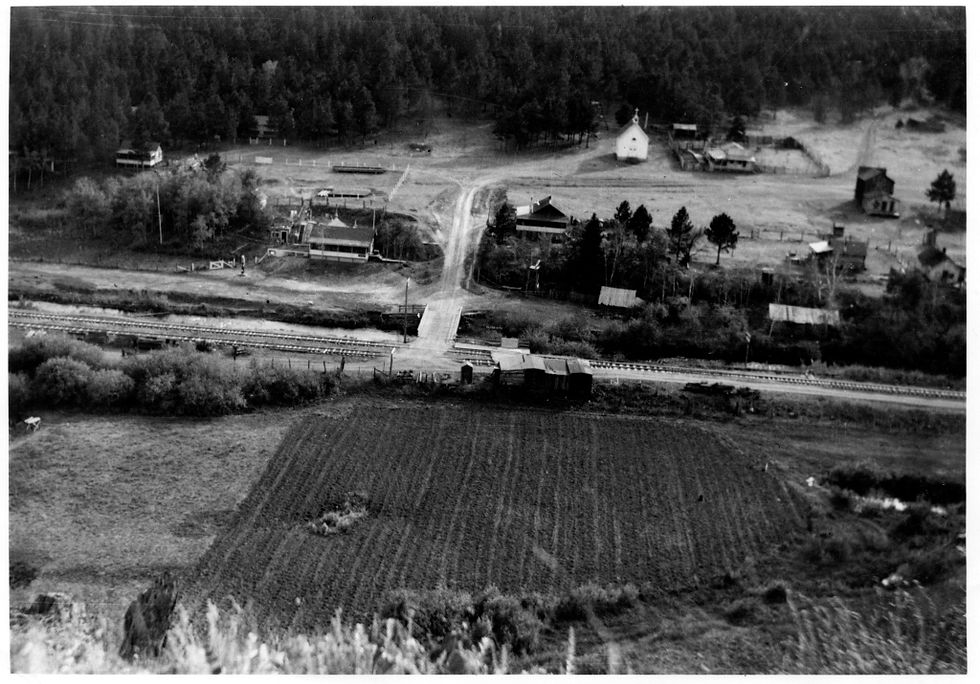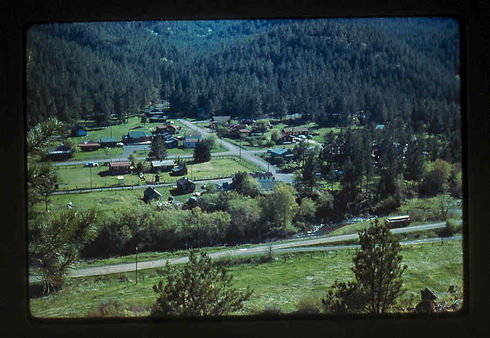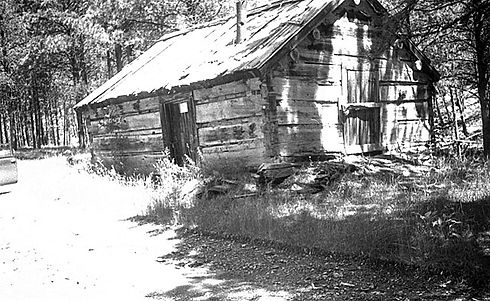
FROM BUSTLING "CITY" TO SLEEPY
TOWN
Silver City was settled in 1876 by the Gorman brothers who came to the Black Hills from Canada in search of precious metals. They set up two mines: the Diana Lode and The Lady of the Hills.
Although initially called Camp Gorman, the town was eventually platted and renamed Silver City. By the year 1878, the population of Silver City had grown to over 300 residents. Many who settled in Silver City came to seek their fortunes in the nearby gulches looking for gold and silver. Residents would often work at the Homestake Gold Mine in Lead to earn enough money to buy supplies and dynamite.
As mining activity grew, other businesses sprung out including a general store and a hotel. In 1906, a railroad with a stop at Silver City was established (see Crouch Line). A sawmill, downstream from Leola Park, provided lumber for building and mining. A post office, school and a Catholic church were also organized.
As years went by and many mining claims didn't pan out, the dreams of riches vanished. As activity decreased in Silver City, it became more of a recreational community. Often considered a "ghost" town, many original buildings from the turn of the century remain standing today.
WHY THE NAME SILVER CITY?
Doesn't the moniker "city" sounds a little big for our humble town? Wanderers seem confused when first reaching town. While looking at the USFS issued tourist map they inquire "Where is Silver City?" "You're here" comes the reply.
The town does not deserve the sizable font found in those maps. They are at par with Hill City, another "city". We also used to have Canyon City just up the creek.
A "City" is normally a large place. Maybe the early settlers had big plans for the town.
There are conflicting stories about the naming of the town but the most plausible is that the mines had a heavy yield of silver along with other metals, hence the name.


EARLY SETTLERS
In 1910, John Gorman put his mine holdings up for sale. There are several tales regarding the business dealings of the Gormans.
A US Forest Service plaque located near the historic Gorman cabin tells the story of how John Gorman sent his first load of ore to Denver with his "best friend" only to never see or hear from either again!
Another account published in the South Dakota Guide is as follows:
"An Eastern syndicate sent representatives to try to buy the holdings of the Gorman brothers, offering them $300,000. History tells us that the Gormans were uneducated men who could not figure out whether the offer was more or less than a million
dollars, which they insisted was their price. They delayed their decision till one night their cabin caught fire and the eldest brother was burned to death. The other two brothers disappeared." (WPA, 407)

























